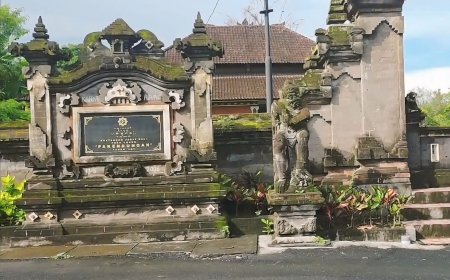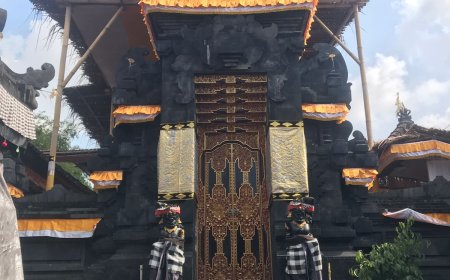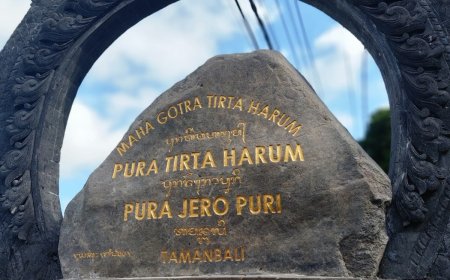Tracing the Meaning and History of Pura Mekele Dewa Gede Gamang
Bali Island is known as the Island of the Gods. One of the temples with high historical and mythical value often encountered on the island of Bali is Pura Mekele Dewa Gede Gamang. Pura Mekele Dewa Gede Gamang is located in the Western Buleleng Regency. This temple is one of the Dang Khayangan temples or the universe’s sacred places associated with the arrival of the Shiva Sidanta Priest Dang Hyang Nirarta (Ida Pedanda Sakti Wawu Rauh) in the 15th century AD.
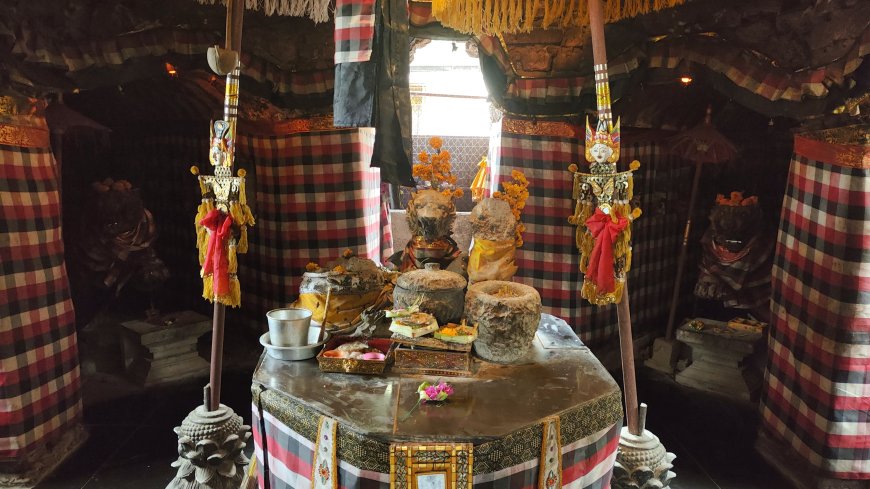
Pura Mekele Dewa Gede Gamang is one of the important temples in Buleleng Regency, Bali, which has a long history and is rich in Hindu religious traditions. This temple serves as a place of worship and reverence for the main deities in Hinduism, as well as a spiritual center for the local community. Like many temples in Bali, Pura Mekele Dewa Gede Gamang functions not only as a place of prayer but also as a symbol of spiritual strength, tradition, and the culture of the Buleleng community.
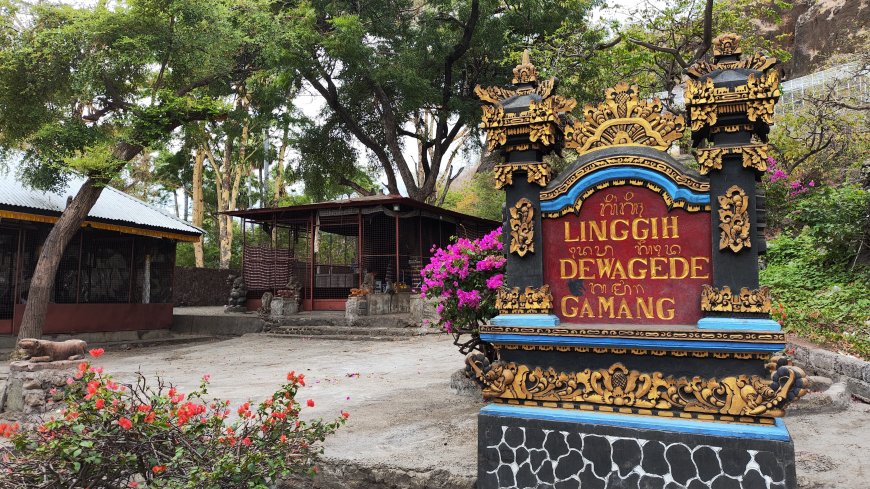
Pura Mekele Dewa Gede Gamang (Source of Photo: Personal Collection)
Pura Mekele Dewa Gede Gamang has a name rich in meaning that reflects the spiritual nature and traditions inherent in this temple. The name "Mekele" is believed to refer to the name of the location or area where this temple was established, becoming the center of the spiritual life of the local community. "Gede," which means great or grand in Balinese, indicates the status of the temple as a sacred place with a high position in the Hindu religious system in Bali. This also signifies that this temple is not only important on a local scale but also has a broader influence in the Buleleng region and its surroundings.
Meanwhile, the word "Gamang" has a deeper and more symbolic meaning. In Balinese, "Gamang" can be interpreted as something shaky, unstable, or in uncertainty. However, in a spiritual context, this term refers to the quest for inner balance and life. The name carries the meaning that this temple was built as a place to find spiritual equilibrium amid a life full of challenges and uncertainties. The community believes that by worshiping at Pura Mekele Dewa Gede Gamang, they can seek protection and spiritual guidance to face various life difficulties. The combination of the four elements of this name "Mekele," "Dewa," "Gede," and "Gamang" makes Pura Mekele Dewa Gede Gamang a symbol of a great center of spiritual power, a place where people seek peace, protection, and balance in their lives. The name not only refers to the physical location of the temple but also reflects a deeper spiritual purpose, namely, a place to strengthen the relationship with the deities and ancestors, as well as to seek guidance amid a dynamic and sometimes uncertain life.
Pura Mekele Dewa Gede Gamang is believed to have been established during the early development of Hinduism in North Bali, which took place around the 16th to 17th centuries AD. During this period, the Buleleng region experienced rapid development in political and religious aspects, particularly with the establishment of the Buleleng Kingdom. The kings and local rulers, who were very adherent to Hindu teachings, built many temples as centers of spirituality and protection. The establishment of this temple was driven by the community's spiritual need for a place that could be used as a center for worship and reverence to the deities and ancestral spirits. The establishment of Pura Mekele Dewa Gede Gamang is also related to the spiritual expansion of great priests who played a role in the dissemination of Hindu teachings in Bali. One figure often mentioned is Dang Hyang Nirartha, a holy priest regarded as instrumental in spreading Hindu teachings in Bali in the 16th century. Although there is no direct evidence linking Nirartha to the establishment of Pura Mekele Dewa Gede Gamang, the influence of his teachings is believed to have inspired the establishment of many temples in Bali, including Pura Mekele Dewa Gede Gamang.
Pura Mekele Dewa Gede Gamang is one of the important temples classified as "Dang Kahyangan" temples, which are built to honor sacred ancestors and the main deities in Hinduism. The primary function of this temple is as a place of worship, where the community comes to seek protection, blessings, and spiritual balance. In addition to being a place of prayer, Pura Mekele Dewa Gede Gamang is also considered a center of spiritual protection for the surrounding community. The community believes that this temple possesses magical powers capable of protecting them from natural disasters, diseases, or spiritual disturbances.
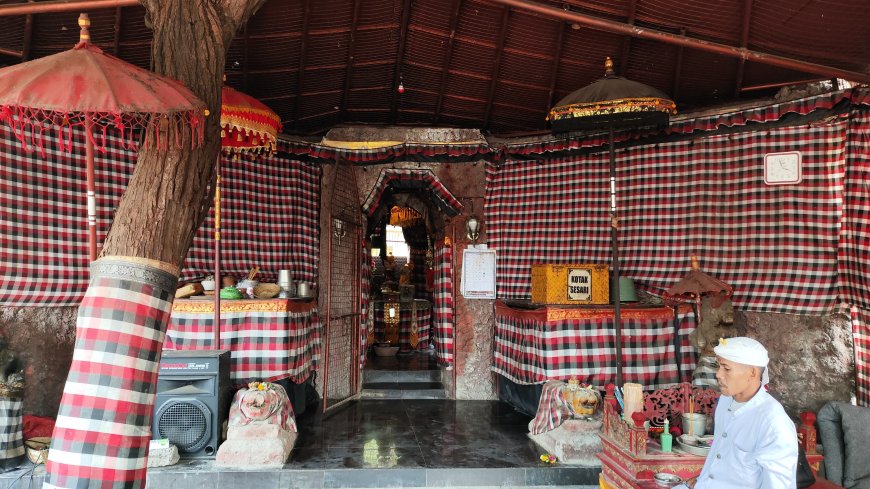
Pura Mekele Dewa Gede Gamang (Source of Photo: Personal Collection)
As one steps into the utama mandala, it is clear that the shrine shaped like a statue is located within a structure resembling a cave. The statue, made of paras stone, somewhat resembles a tiger statue. “At first glance, it may not take form. If observed carefully, it can take on various shapes. It requires tranquility and patience to observe it,” said the Kelian (leader) of the Pura Pulaki and Pesanakan. The caretaker of Pura Mekele Dewa Gede Gamang stated that the story of the existence of Pura Mekele Dewa Gede Gamang as a pesanakan (sub-temple) of Pura Pulaki is indeed closely related to the Babad Pulaki.
There, it is closely connected to a sanctified figure named Dang Hyang Nirartha around the 14th century. The Babad Pulaki explains that the number of gamang in the area of Pura Agung Pulaki reached 8,000 people. These gamang were originally residents of Pulaki who were praled (destroyed) by Dang Hyang Nirartha and turned into wong samar (invisible beings). Initially, Dang Hyang Nirartha came to Bali with his two wives, Sri Padmi Keninten and Dewa Ayu Swabawa. Dang Hyang Nirartha encountered a dragon when he first set foot on Balinese soil.
With high and strong spiritual energy, Dang Hyang Nirartha managed to save himself by changing his appearance and escaping from the dragon's mouth. His two wives were so frightened that they ran away in panic. Sri Padmi Keninten was later found at Pura Pagaluhan, above Pura Pulaki. Dang Hyang Nirartha's other wife, Dewa Ayu Swabawa, was found at Pura Melanting around Pura Agung Pulaki. It was reported that the local community disturbed Dewa Ayu Swabawa, causing Dang Hyang Nirartha's wife to refuse to go to the Gelgel Palace and to ask for a blessing to remain unseen by others.
At that time, knowledge of supernatural abilities was granted to Dewa Ayu Swabawa to make her invisible to humans. In contrast, the 8,000 people who lived there were praled into wong samar, who then resided in Pulaki. These thousands of wong samar were also known as the mystical army of Dang Hyang Nirartha, believed to still maintain peace and guard against external threats to Bali. The existence of these wong samar was then centered at Pura Goa Mekele Dewa Gede Gamang.



















































